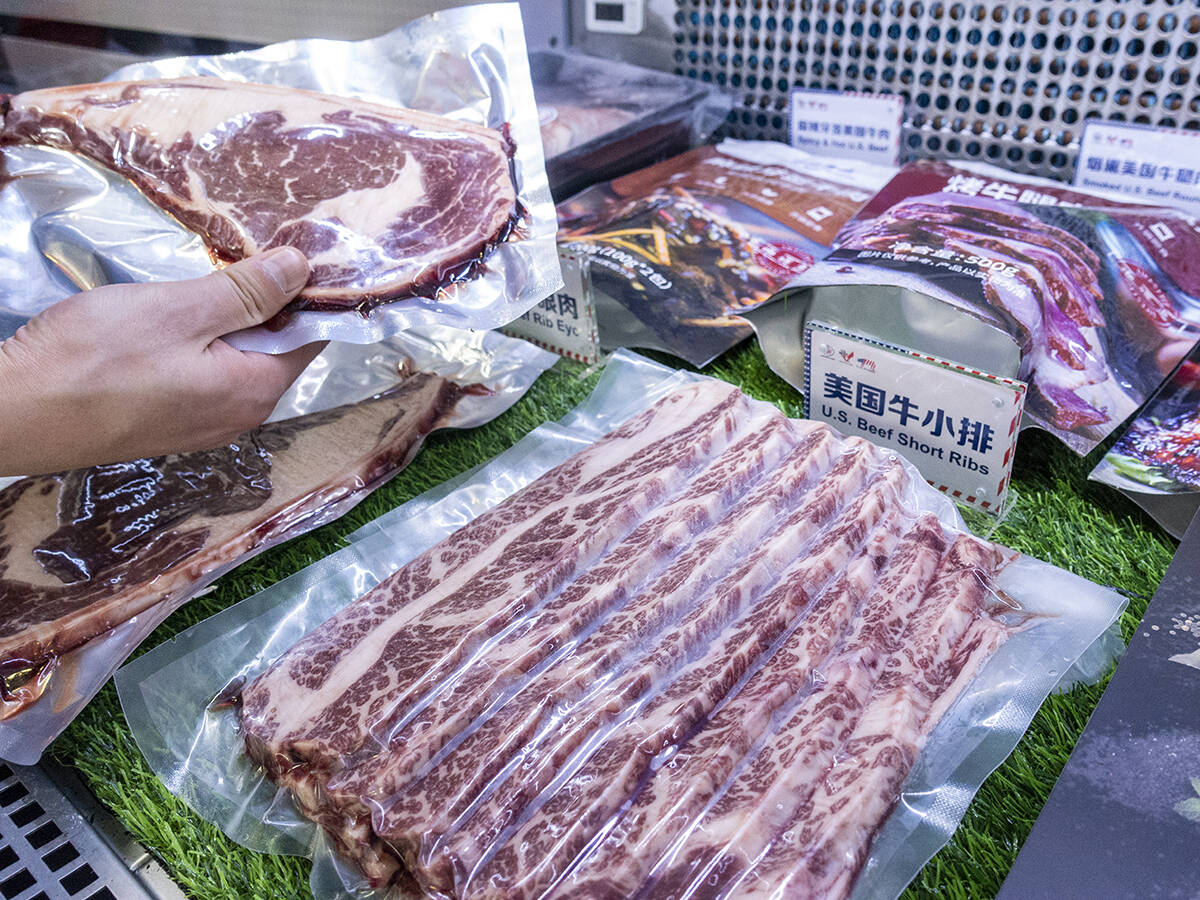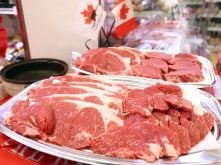PICTURE BUTTE, Alta. – A federal injection of nearly $700 million for the Canadian livestock industry, hurt by the BSE crisis, is as good as money in the bank, say some Alberta ranchers.
Steve Primrose has been in a tenuous position since last year because he feeds cattle and runs a trucking business near Picture Butte.
“This is going to jumpstart the feeding industry,” he said in an interview at Shawn Murray’s feedlot where prime minister Paul Martin outlined the aid package March 22.
Primrose has received money from a variety of programs offered throughout the year and was grateful for every dollar even if cheques were slow to arrive.
Read Also

Tariffs cost U.S. Chinese beef market
Australian beef has replaced U.S. supply in China since president Donald Trump returned to the White House, funnelling hundreds of millions of dollars into Australian pockets.
“It was money in the banks. It wasn’t a matter of how long because we knew they were good for it,” he said.
Before borders closed last May 20 after BSE was discovered in Alberta, Primrose was shipping fattened cattle every week to a Utah packing plant. Now his 4,000-head lot is half full and his company, Primrose Trucking, is barely hanging on, dropping to a fleet of seven trucks from 25.
Primrose talks to the Utah plant almost daily. Staff has been laid off and the company is scrambling for live animals that used to come from Canada.
Some fear many Canadian cattle could leave en masse once borders reopen, but he worries the loss of well-trained truckers and their units could stall trade.
“Where are we going to get the infrastructure to haul these cattle? When you start losing people, how do you get them to come back? Livestock hauling is not a bed of roses,” he said.
Bob Christie, who ranches near Claresholm, Alta., is also grateful for any help the government offers.
He has a 300 cow-calf operation and retains ownership of his calves for a branded beef program.
“I got a premium but I still lost $100 a head. If I had been in the feeding business I would have lost a lot more,” he said.
Christie anticipates about eight million animals could be eligible for a payment under the new program, with a large share coming to Alberta. The money should help feedlot operations and ranchers like himself who are backgrounding cattle at home.
“It will be something that will tide us over and help pay expenses. A lot of people are behind on bills from the previous summer,” he said.
“Everyone has been holding back and not spending any money. They’re trying to get by with as little spending as possible and that is affecting a lot of the suppliers,” Christie said.
Darcy Davis, who has a cow-calf operation at Acme, Alta., anticipated getting more than $17,000 through this program to cover cattle he retained over the winter.
Since the program is based on inventory as of Dec. 31, 2003, he hopes it will help those who lost considerable money when they sold cattle into a depressed calf market in January and February after the second BSE announcement on Dec. 23.
As a director with the Canadian Cattlemen’s Association, he said a contingency plan is under way if the border remains closed.
“If we get a prolonged border closure in addition to drought, then it’s going to get real tough,” he said.
While the latest aid announcement was going on at Picture Butte, another group of producers had joined Alberta premier Ralph Klein in Washington to plead the case for an open border.
“We know the wheels are slowly turning to get that border open. That’s the only really happy ending to this thing,” Davis said.















